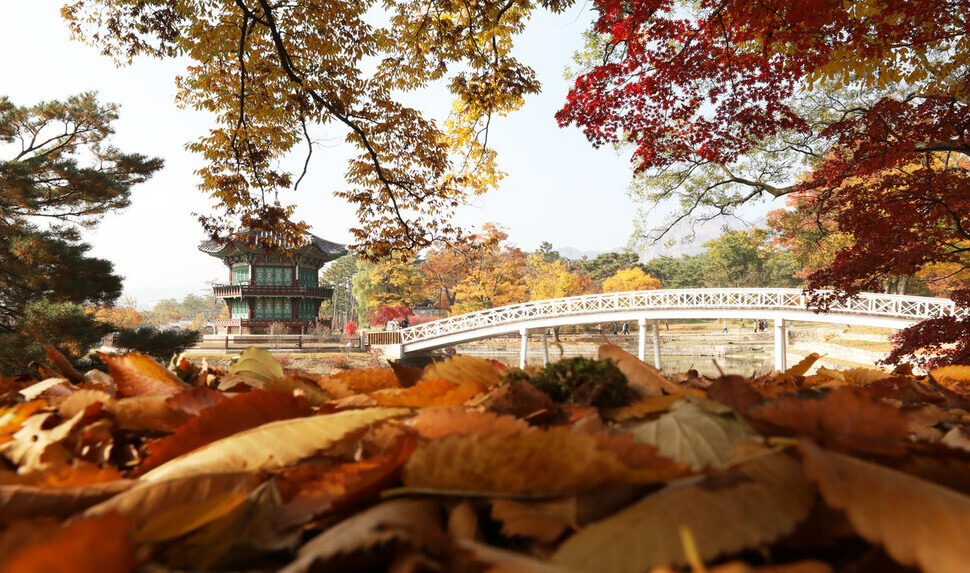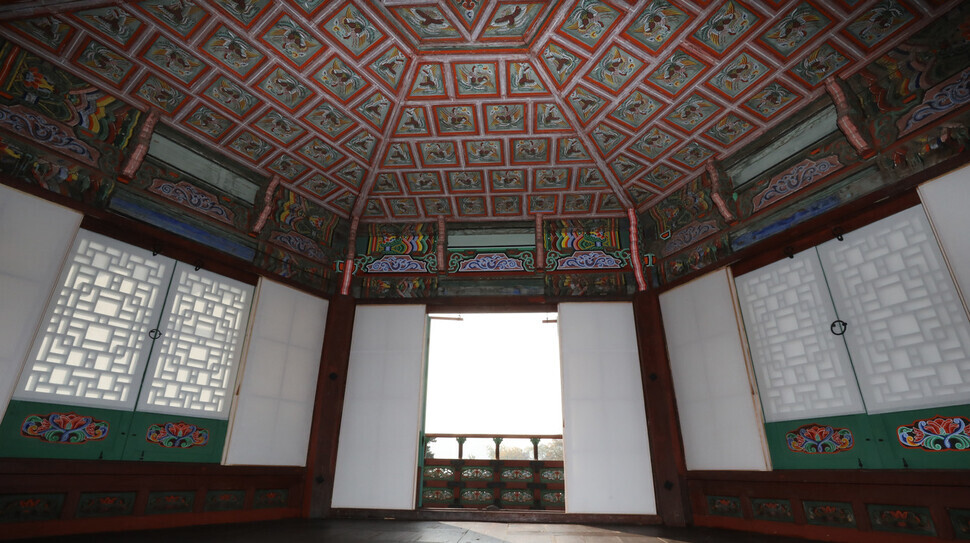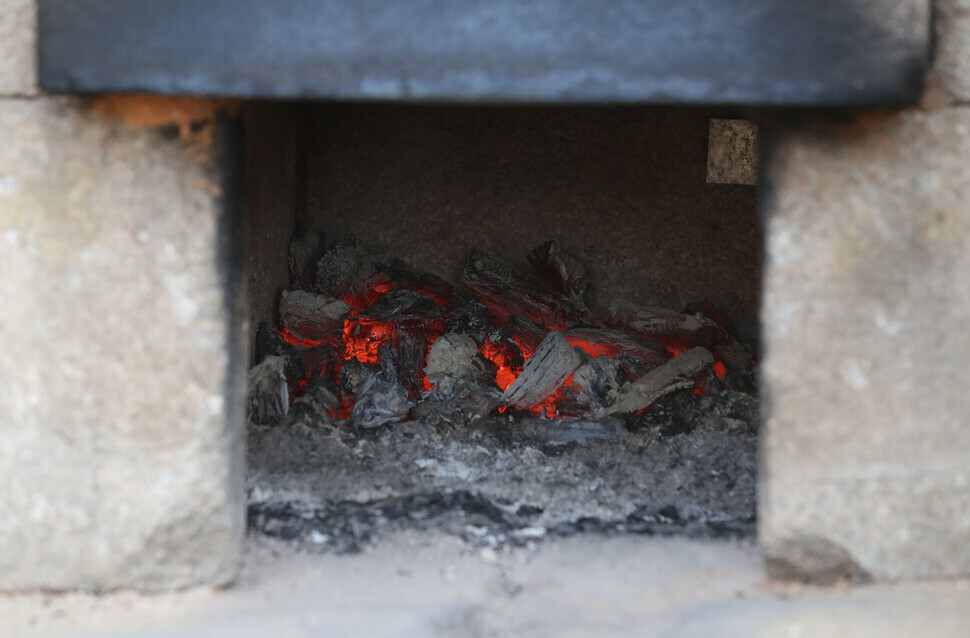hankyoreh
Links to other country sites 다른 나라 사이트 링크
[Photo] Palace pavilion and bridge restored to their 19th-century glory

Leisure locales favored by Joseon-era kings and queens such as the pond at Gyeongbok Palace, Hyangwonjeong Pavilion and Chwihyanggyo Bridge have finally been restored after a three-year process. The public will be able to peer into the historic sites in the form of a special exhibition starting in April 2022.

The Royal Palaces and Tombs Center of the Cultural Heritage Administration announced Nov. 5 that the restoration of Hyangwonjeong Pavilion and Chwihyanggyo Bridge in Gyeongbok Palace had been completed. The original bridge connecting Geoncheong Residence and Hyangwonjeong Pavilion was located to the north of Hyangwonjeong Pavilion. It was, however, destroyed during the Korean War and rebuilt to the south of the pavilion for viewing convenience in 1953.

Besides restoring the bridge to its original location, its form was also restored to its original arched wooden bridge structure from the previous flat bridge with wooden boards on stone pillars. As in old photos, the bridge was restored to its white color.

Hyangwonjeong Pavilion, designated Treasure No. 1761 in 2012, is a hexagonal two-story structure on a man-made island in the middle of a square pond at the rear area of Gyeongbok Palace in Seoul.

“Hyangwon” means “the scent travels far” and is derived from “On the Love of Lotus” by the Chinese scholar Zhou Dunyi.
Though no records have been found confirming when Hyangwonjeong and the wooden bridge Chwihyanggyo were built, mention of Hyangwonjeong debuted in 1887, the 24th year of King Gojong’s reign, in Seungjeongwon Ilgi (The Daily Records of the Joseon Dynasty’s Royal Secretariat). Thus, the date of construction can be estimated as being before 1887.

Yet a study on the age of the lumber used to make the structure held during restoration work confirmed two instances of lumber use in 1881 and 1884. This led scholars to cite 1885 as the time of the pavilion’s construction.
By Kim Hye-yun, staff reporter
Please direct questions or comments to [english@hani.co.kr]

Editorial・opinion
![[Editorial] Intensifying US-China rivalry means Seoul must address uncertainty with Beijing sooner than later [Editorial] Intensifying US-China rivalry means Seoul must address uncertainty with Beijing sooner than later](https://flexible.img.hani.co.kr/flexible/normal/500/300/imgdb/original/2024/0517/8117159322045222.jpg) [Editorial] Intensifying US-China rivalry means Seoul must address uncertainty with Beijing sooner than later
[Editorial] Intensifying US-China rivalry means Seoul must address uncertainty with Beijing sooner than later![[Column] When ‘fairness’ means hate and violence [Column] When ‘fairness’ means hate and violence](https://flexible.img.hani.co.kr/flexible/normal/500/300/imgdb/original/2024/0516/7417158465908824.jpg) [Column] When ‘fairness’ means hate and violence
[Column] When ‘fairness’ means hate and violence- [Editorial] Yoon must stop abusing authority to shield himself from investigation
- [Column] US troop withdrawal from Korea could be the Acheson Line all over
- [Column] How to win back readers who’ve turned to YouTube for news
- [Column] Welcome to the president’s pity party
- [Editorial] Korea must respond firmly to Japan’s attempt to usurp Line
- [Editorial] Transfers of prosecutors investigating Korea’s first lady send chilling message
- [Column] Will Seoul’s ties with Moscow really recover on their own?
- [Column] Samsung’s ‘lost decade’ and Lee Jae-yong’s mismatched chopsticks
Most viewed articles
- 1[Editorial] Transfers of prosecutors investigating Korea’s first lady send chilling message
- 2S. Korea “monitoring developments” after report of secret Chinese police station in Seoul
- 3[Exclusive] Unearthed memo suggests Gwangju Uprising missing may have been cremated
- 4[Editorial] Intensifying US-China rivalry means Seoul must address uncertainty with Beijing sooner t
- 5China, Russia put foot down on US moves in Asia, ratchet up solidarity with N. Korea
- 6Xi, Putin ‘oppose acts of military intimidation’ against N. Korea by US in joint statement
- 7Truth commission confirms Korean War killings by soldiers and police
- 8[Editorial] South Korean women are mobilizing in unprecedented ways
- 9Calls for gender-equality continue as demonstrations target President Moon
- 10[Column] “Hoesik” as ritual of hierarchical obedience